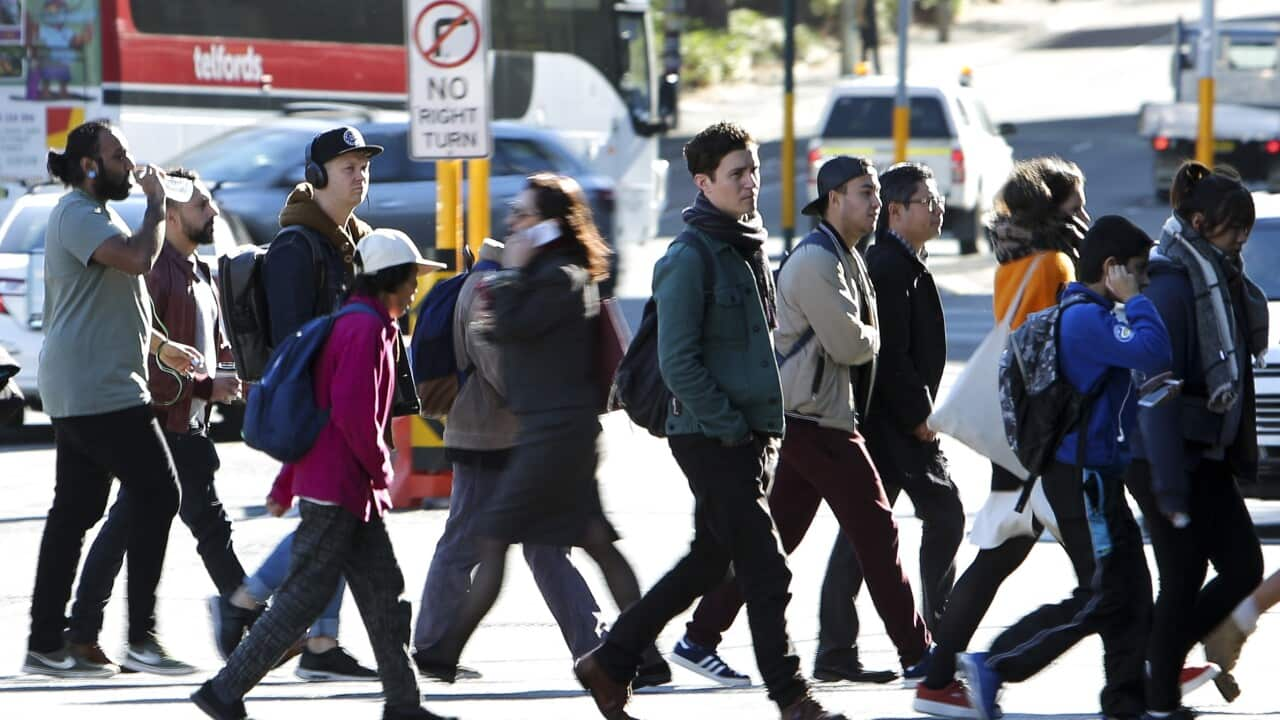KEY POINTS
- Australia's population grew by 2.3 per cent over the last year to reach 27.1 million in March.
- This was driven mainly by net overseas migration (83 per cent), while natural increase made up the other 17 per cent.
- Demographer Dr Liz Allen said issues such as a declining fertility rate pose issues for the country's future.
The country was home to 27,122,411 people as at 31 March this year, according to the latest figures released by the Australian Bureau of Statistics (ABS).
The population grew by 615,300 people — 2.3 per cent — over the previous year.
This was mainly driven by net overseas migration (83 per cent), with what's known as natural increase making up the remaining 17 per cent.
Demographer Dr Liz Allen, from the Australian National University's Centre for Social Policy Research, said any major population milestone offers a chance to reflect on how and where we've come from.
"It gives us an ability to pause and think about what lies ahead, the things that are providing challenges and opportunities, and to charter a course for maximising wellbeing into the future," she said.
How did the population reach 27 million?
A country's population is determined by two factors: natural increase, which means the number of births and deaths over a period of time, and net overseas migration, which is the number of arrivals into the country minus departures.
Australia's population is growing — though at a slowing rate, Allen said.

Australia's annual population growth rate since 2004. Source: SBS News
"We're starting to see population growth slow. Immigration is still, historically, relatively high. But it is declining," Allen said.
Net overseas migration
According to the ABS figures, released on Thursday, annual net overseas migration was 509,800 people, down from a peak of 559,900 in September last year.
This figure was drastically impacted by the pandemic.
Travel restrictions had meant overseas migration plunged to record lows in 2020-21, with Australia losing around 85,000 people in .
"We then had people come to the country, and because we had those in the population that were due to leave in the future leave early, we didn't have the other side of that net equation ongoing over time," Allen said, referring to international students and visitor visa holders who returned to their country of origin in the early days of the pandemic.
She argued a longer view of Australia's net overseas migration levels dating from before the pandemic shows the "peaks and troughs" are still balancing out.
"We will see the net overseas migration figure correct with time," she said.
A declining fertility rate
The natural population increase was 105,500, the latest figures show.
There were 289,700 births — representing a 1.7 per cent decrease since the previous year — and 184,200 deaths.

The make-up of Australia's annual population change since 2004. Source: SBS News
Australia has been experiencing a, which is the average number of births per woman, for some time.
Allen is concerned a continued decline could pose challenges for the economy, including an ageing population and shrinking relative workforce.
But there's another side to this issue.
"A falling fertility rate isn't a problem if that's what individuals are choosing ... but that doesn't appear to be the case," she said.
"Life is getting in the way; the barriers to achieving a desired family are insurmountable."
Allen said barriers range from issues such as housing affordability, cost of living, gender inequality and climate change.
"These four broad areas come together, creating the perfect storm to undermine Australia's future."
What happened across the country?
There was population growth in all states and territories over the past year.
Western Australia had the fastest-growing population – up 3.1 per cent - followed by Victoria (2.7 per cent), Queensland (2.5 per cent), NSW (2.0 per cent), the ACT (1.8 per cent), South Australia (1.5 per cent) and the Northern Territory (0.8 per cent).
Tasmania had the slowest growth rate, at 0.4 per cent.

Population growth as at March 2024 by state and territory. Source: SBS News
Allen said Australia's latest population milestone now offers a chance to look beyond the figures — and understand what's going on in society.
"Undoubtedly, we have challenges. But with those challenges, we have opportunity to act now, to ensure that Australia's future feels more certain," she said.












